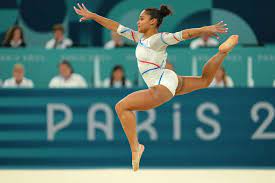Gymnastics for kids can offer more than just cartwheels and forward rolls—it can shape confidence, focus, and physical strength for life. But how do you know if your child is the kind who’ll thrive in this high-energy sport?
Here are five telltale signs your child might just fall in love with gymnastics—and why early involvement could be one of the best decisions you make for their development.
What Are the Early Signs Your Child Is Suited to Gymnastics?
Some kids naturally gravitate toward movement-based play. Others show signs in more subtle ways. Here’s what to look for:
1. They Climb, Hang, Flip, and Roll Constantly
Does your child turn the couch into a jungle gym? Are monkey bars their happy place? If your child seems magnetically drawn to physical play—rolling on the floor, handstanding against walls, or swinging from anything that allows it—that’s a big green flag.
Why it matters: This natural urge to move is a key indicator of kinaesthetic intelligence, a common trait among successful young gymnasts. Channelling that energy into a structured class can help refine their skills safely and progressively.
2. They Have Great Body Awareness and Coordination
Can your child balance easily on narrow edges or copy complex moves from others? Even in early years, some children display unusually sharp proprioception (awareness of where their body is in space).
Gymnastics rewards this quality. From balancing on beams to executing tumbling passes, kids who intuitively understand how to shift their weight or land softly often thrive in structured gymnastics for kids programs.
3. They’re Focused, Even in High-Energy Environments
While gymnastics is fun, it’s also highly disciplined. It requires listening, waiting turns, following sequences, and practising the same skills over and over. Kids who can stay attentive even in noisy or exciting spaces often do well in this environment.
Real-world example: Coaches often say it’s not always the most energetic child who excels, but the one who listens carefully and shows steady concentration over time.
This ties into Cialdini’s Consistency principle—children who enjoy routines and show up regularly build habits that support success. Gymnastics becomes the reward for their commitment.
4. They Imitate Movement and Learn Visually
If your child watches others and quickly mirrors what they see—whether it’s a dance routine, a yoga move, or a somersault—they’re likely a strong visual learner.
In gymnastics, this is gold. Much of a child’s progress depends on copying demonstrations and translating those movements into their own body. Quick imitators tend to pick up techniques with less trial and error.
5. They Light Up with Encouragement and Community
Does your child beam with pride when praised for a job well done? Kids who are motivated by encouragement and group camaraderie often love gymnastics.
Classes offer regular feedback, badges or level-ups, and the chance to work as part of a team—especially in performance-based or competitive programs. The Social Proof and Liking principles come into play here. When they see peers enjoying the sport and coaches backing their progress, kids are more likely to stay engaged and passionate.
Why Gymnastics Helps Kids Thrive
Beyond fun and fitness, gymnastics supports physical literacy—a term used to describe the confidence and ability to move in ways that are useful in all sports and daily life.
Benefits include:
- Increased strength, flexibility and balance
- Improved discipline and goal-setting
- Better posture and coordination
- Stronger self-esteem through progress and achievement
- Lifelong enjoyment of physical activity
And unlike many team sports, gymnastics offers individual attention. This means even shy or introverted kids can grow without pressure to perform in front of large groups.
How Early Can Kids Start Gymnastics?
Many centres offer “KinderGym” or preschool programs for children as young as 18 months. These focus on parent-assisted movement, basic shapes (like tucks and straddles), and building comfort with equipment.
Around ages 4–6, children may begin more structured recreational classes that introduce proper technique in skills like rolls, cartwheels and handstands.
By age 7 and up, more confident children may explore artistic gymnastics pathways that involve routines, apparatus work, and even friendly competition.
How to Support Your Child If They Show Interest
If you’ve ticked off one or more signs above, consider introducing your child to a trial class. Choose a local, well-reviewed program with accredited coaches and age-specific streams.
Support their journey by:
- Praising effort, not perfection
- Letting them explore at their own pace
- Encouraging regular attendance (to build consistency)
- Celebrating progress with them—even the small wins
Most importantly, let it be fun. Early childhood sport should always feel like play, even when structured.
FAQs
What if my child isn’t flexible?
Flexibility can be developed over time with gentle stretching and regular practice. It’s not a requirement to start gymnastics for kids.
Does gymnastics help with other sports?
Absolutely. Skills like balance, spatial awareness and strength transfer well to athletics, football, dance and even swimming.
Is gymnastics safe for young children?
Yes, when delivered by qualified coaches in age-appropriate formats. Classes typically include warm-ups, safety mats, and gradual skill progressions to minimise injury.
Gymnastics isn’t just for future Olympians—it’s for curious, active, and focused kids who love to move and improve. If your child shows any of the five signs above, it could be a sign that they’re ready to explore this dynamic and rewarding sport.
And if you’re looking for a local place to explore more children’s fitness classes, there are plenty of flexible options to get started today.
For more on how physical literacy supports early development, check out this expert guide from Sport Australia.

